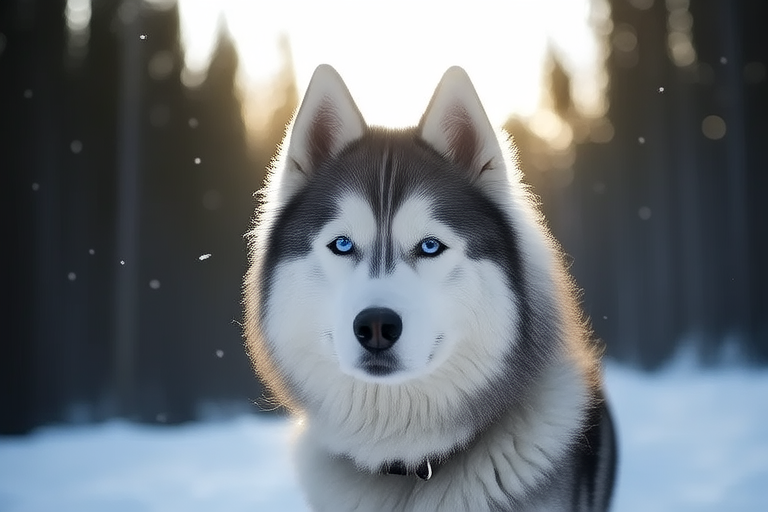Baffling Behaviors: Decoding Your Siberian Husky’s Unique Traits
Siberian Huskies have long captured the hearts of dog lovers worldwide with their striking appearance and enigmatic behavior. These dogs are more than just pretty faces; they carry centuries of history and purpose within them. Originating from the harsh landscapes of Siberia, where they were bred by the Chukchi people, Siberian Huskies were originally used as sled dogs. Their endurance, strength, and resilience made them indispensable for the Chukchi people, who relied on these dogs to traverse vast distances in extreme weather conditions.
The Evolutionary Roots of Siberian Husky Traits
Understanding the evolutionary roots of your Siberian Husky’s behavior can provide valuable insight into managing their unique traits. The strong prey drive that many huskies exhibit is a direct result of their history as hunting companions. In their native environment, these dogs would have been tasked with tracking and capturing small game, making it essential for them to be alert and responsive to movement. This trait can sometimes manifest in modern settings as an urge to chase smaller animals, including cats and squirrels.
Another hallmark of the Siberian Husky is their independent nature. This characteristic stems from their role as working dogs, where they needed to operate semi-autonomously while pulling sleds over long distances. While this independence makes them resourceful and self-sufficient, it can also lead to challenges in training and bonding. Huskies often require patient, consistent, and positive reinforcement-based training methods to harness their natural instincts without stifling their individuality.
Vocal tendencies are yet another distinctive feature of the breed. Known for their tendency to howl, Siberian Huskies use this form of communication to stay in touch with their pack members during long journeys. In modern homes, this behavior can sometimes be mistaken for excessive barking or whining. However, understanding the historical context of this trait can help owners appreciate its significance and learn to manage it effectively.
Tips for Managing and Training Siberian Huskies
Managing the strong prey drive of a Siberian Husky requires a combination of environmental control and socialization. Ensuring that your husky is well-socialized from a young age with other pets can help reduce the likelihood of aggressive encounters. Additionally, providing mental stimulation through interactive toys and games can redirect their focus away from potential prey items.
Training a Siberian Husky effectively involves recognizing their need for autonomy and respect. Positive reinforcement techniques such as clicker training can be particularly effective, as they reward desired behaviors without resorting to punishment. Consistency is key, as these dogs thrive on routine and clear expectations. Patience is also crucial, as Siberian Huskies may take longer to respond to commands due to their independent nature.
Addressing vocal tendencies requires a nuanced approach. Teaching your husky alternative forms of communication, such as verbal cues or hand signals, can help redirect their instinctual urges. Providing opportunities for them to express themselves through howling, such as playing recordings of other dogs or taking them on walks where they can hear distant sounds, can also be beneficial.
Real-life anecdotes often illustrate these points vividly. For example, one owner recounted how her Siberian Husky, named Kira, had a penchant for chasing rabbits in their backyard. After implementing a combination of supervised play sessions with a stuffed rabbit toy and reinforcing commands with treats, Kira’s interest in actual rabbits diminished significantly. Another owner shared how his husky, Max, was initially resistant to basic obedience commands but responded beautifully once he was trained using positive reinforcement techniques.
Enriching Your Husky’s Environment
Providing an enriched environment is crucial for the well-being of your Siberian Husky. Physical exercise is paramount, given their high energy levels. Daily walks, runs, and opportunities for off-leash activities in safe areas can help satisfy their need for physical exertion. Mental stimulation is equally important, as these dogs are intelligent and require challenging tasks to keep their minds engaged.
Toys that encourage problem-solving, such as puzzle feeders or interactive games, can be highly beneficial. These not only provide entertainment but also help prevent destructive behaviors that might arise from boredom. Creating a stimulating environment at home can include setting up agility courses, teaching new tricks, or even engaging in scent work. Social interaction is also vital, whether through visits to dog parks or organized meet-ups with other dogs.
In conclusion, owning a Siberian Husky is a rewarding experience that comes with its own set of challenges. By understanding the breed’s history and evolutionary background, you can better appreciate and manage their unique traits. With patience, consistency, and creativity, you can create a fulfilling life for your husky, ensuring that their energy and intelligence are channeled positively. Embrace the journey of learning and growing together with your Siberian Husky, and enjoy the bond that comes with understanding and respecting their distinctiveness.
